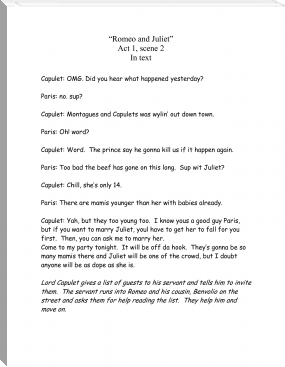Thrilling Stories Of The Ocean<br />From Authentic Accounts Of Modern Voyagers And Travellers; Desig, Marmaduke Park [recommended ebook reader .txt] 📗

- Author: Marmaduke Park
Book online «Thrilling Stories Of The Ocean<br />From Authentic Accounts Of Modern Voyagers And Travellers; Desig, Marmaduke Park [recommended ebook reader .txt] 📗». Author Marmaduke Park
Sailors, to prevent the danger which would arise from coming in contact with one of these tremendous columns, discharge a cannon into it: the ball passing through it breaks the watery cylinder, and causes it to burst, just as a touch causes your beautiful soap-bubbles to vanish, and turn to water again. These waterspouts, at sea, generally occur between the tropics, and I believe frequently after a calm, such as the poet has described in the following lines:
Happily "dead calms" do not generally last so long as to lead to any serious result. Sailors have a superstitious and foolish belief that whistling in a calm will bring up a breeze, and they do this in a drawling, beseeching tone, on some prominent part of the vessel. Poor fellows! what a pity that their thoughts should not more frequently be directed to Him "who hath measured the waters in the hollow of his hand, and meted out heaven with a span," and whose works and wonders in the deep "they that go down to the sea in ships" have such abundant opportunity for observing.
[pg 86] [pg 87]
HEAVING THE LEAD.
[pg 87]
HEAVING THE LEAD.

Here we have a sailor in the act of heaving the lead, or taking soundings, which is a thing extremely necessary to be done when a ship is approaching the shore, as there is great danger of her running on a sand-bank or striking on a sunken rock. I will now tell you how it is managed. A sailor gets over the ship's side, as you see in the engraving, and takes his station in what are called "the chains;" he holds in his hand a coil of rope, with the length in fathoms marked upon it; this rope has a mass of lead attached to the end of it. At the [pg 88] bottom of the lead, is a hollow place, into which a piece of tallow candle is stuck, which brings up distinguishing marks from the bottom of the sea, such as small shells, sand, or mud, adhering to it. If the tallow be only indented it is supposed to have fallen on bare rocks. A correct account of the soundings is entered in the logbook; this book contains a description of the ship's course, the direction of the wind, and other circumstances, during every hour of each day and night. Having arranged the rope so as to allow it to fall freely when cast, the sailor throws the lead forward into the water, giving rope sufficient to allow it to touch the bottom; then with a sudden jerk, such as long practice [pg 89] alone can enable him to give, he raises the weight, and after examining the mark on the rope made by the water, calls out lustily, so that all forward can hear, "By the mark seven," or "By the deep nine," according to the case, or whatever the number of fathoms may be. The lead-line is marked into lengths of six feet, called fathoms, by knots, or pieces of leather, or old sail-cloth. In narrow or intricate channels, it is sometimes needful to place a man in the chains on each side of the ship, as the depth will vary a fathom or more even in the breadth of the vessel, and it is of great consequence that the leadsmen give the depth correctly, as a wrong report might cause the ship to run aground. The time that the leadsman is employed in taking soundings is often a period of deep anxiety to the crew and passengers, especially if the vessel be near an unknown coast. When the decrease in the number of fathoms is sudden, the captain knows that danger is near, and quickly gives orders to alter the ship's course: the sailors instantly obey his directions; but sometimes not all their activity and energy can save the vessel; she strikes and becomes a wreck.
[pg 90]Turn to the 27th chapter of the Acts of the Apostles in your Bible, and you will there read the deeply interesting account of Paul's shipwreck on the island Melita. Life has often been compared to a voyage—and aptly so.
You will find that you, like the mariner, are exposed to many dangers, and that you are never for one moment safe in trusting to your own skill to guide your little bark. In watchfulness and prayer, look to your Heavenly Pilot for directions under every circumstance, often examining your own heart, as the seaman heaves the lead in danger. Then will you be safely guided through storms and calms, amid rocks and shoals, and reach at last the blessed haven of eternal rest and peace.
 [pg 91]
[pg 91] THE BALLOON AT SEA.
THE BALLOON AT SEA.

A balloon is a hollow globe, made of silk, rendered air-tight





Comments (0)